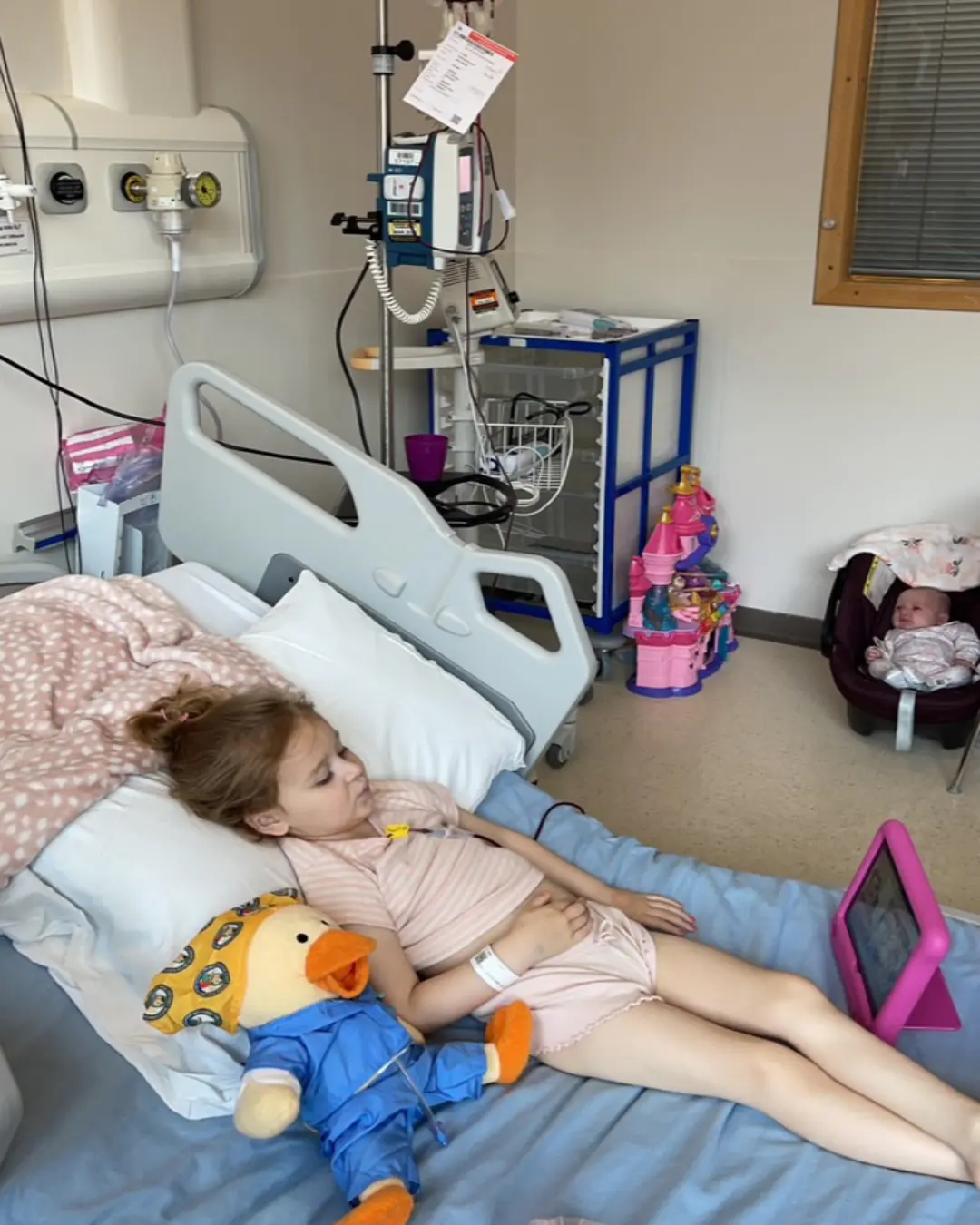
These 3 Types of "Lumps" on Your Body Could Be Cancer – Don't Ignore Them at Any Age, Regardless of Gender
Cancer is one of the most feared diseases in the world. For many types of cancer, once it reaches an advanced stage, the chances of a complete cure are very low. That’s why early detection is so crucial—it can be the key to survival.
Many people have experienced this unsettling moment: you touch a spot on your body and suddenly feel a lump you hadn’t noticed before. You rush to search online, only to find conflicting information—some say it’s a swollen lymph node, others warn it could be cancer. The anxiety is real and completely understandable.
Most of the time, these sudden lumps are signs of inflammation. However, if the lump grows larger or becomes painful, it may be your lymphatic system signaling distress. Understanding what kind of lump you’re dealing with is important—because in some cases, it could be a sign of cancer.
Where Do These Lumps Appear?
Lumps that can be felt by hand are commonly found in the following areas:
-
Under the skin across various parts of the body
-
On superficial organs like the breasts or thyroid gland
-
Around the neck, armpits, and groin area
While many lumps are benign, it’s important to remain alert—some may be early indicators of a serious condition. In general, lumps fall into three major categories:
1. Inflammatory Lumps (Most Common)
These are typically caused by infections or inflammation in the body—such as tonsillitis, gum infections, or sore throats. These lumps usually:
-
Cause noticeable pain or tenderness
-
Measure less than 3 cm in diameter
-
Feel soft and can be moved around easily
-
Often shrink or disappear as the underlying inflammation resolves
This type is the most common and usually not dangerous, but persistent or recurring inflammation may need medical attention.
2. Lumps Caused by Immune System Disorders
In some cases, immune system diseases such as rheumatoid arthritis, systemic lupus erythematosus (SLE), or diffuse connective tissue diseases can lead to lumps forming under the skin or in lymph nodes. These are less common than infectious lumps but still need medical evaluation.
3. Cancerous Lumps – The Most Concerning
These lumps require urgent attention. Certain cancers, such as breast cancer and thyroid cancer, may present as localized nodules or masses. Malignant solid tumors can also cause enlarged lymph nodes due to metastasis (spread of cancer). Additionally, leukemia and lymphoma may show up as enlarged, painless lymph nodes.
The key is not to panic—but to act promptly and seek medical evaluation.
What Should You Do If You Discover a Lump?
When you feel an unusual lump, ask yourself these questions to help with an initial self-assessment:
-
Is it a single lump or are there multiple?
-
Did anything unusual happen recently (e.g., injury, infection exposure)?
-
Are there other symptoms like fever, chest pain, fatigue, coughing or vomiting blood, blood in stool, rapid weight loss, skin discoloration, or sore throat?
-
Do you have a family history of similar symptoms or cancer?
These questions can help guide your doctor during diagnosis. But beyond this, it’s vital to examine the characteristics of the lump:
Key Features to Pay Attention To:
1. Pain
-
Inflammatory lumps usually hurt when touched.
-
Cancerous lumps are typically painless, especially in early stages.
2. Size
-
Lymph nodes smaller than 1 cm are often benign—but not always. If a lump exceeds 1 cm, especially if it keeps growing, it should be checked.
-
Other types of nodules (outside of lymph nodes) are considered abnormal regardless of size. The larger or faster-growing the lump, the higher the risk.
3. Borders and Shape
-
Benign lumps generally have smooth surfaces, well-defined edges, and feel like they are enclosed in a capsule.
-
Malignant lumps tend to be irregular in shape, with unclear boundaries, and feel attached to surrounding tissues.
4. Texture
-
Benign lumps are usually soft or rubbery.
-
Cancerous lumps are typically firmer or harder. However, this is not a definitive sign and should be considered along with other features.
5. Mobility
-
Benign: The lump can be moved under the skin and is not fixed.
-
Malignant: The lump is relatively immobile, feels anchored to deeper tissues, and does not shift when pressed.
When Should You See a Doctor?
If you discover a lump that meets any of the following criteria, you should seek medical attention promptly:
-
It’s painless, firm, and growing
-
It has irregular borders
-
It doesn’t move easily when touched
-
It's associated with other symptoms like unexplained weight loss, fatigue, or persistent fever
A medical professional can perform a physical examination and recommend further diagnostic tests such as ultrasound, blood work, or biopsy if necessary. Only a proper clinical evaluation can determine whether a lump is harmless or potentially cancerous.
Final Thoughts
Many lumps are benign and resolve on their own. But ignoring a lump could mean missing the window for early detection of cancer, which is often critical for successful treatment. Regardless of your age or gender, stay informed and listen to your body.
When in doubt—see a doctor. It’s always better to be safe than sorry.
News in the same category


The washing machine accumulates a lot of dirt and bacteria: Pour 1 bowl of this into the washing drum to clean like new, clothes smell fresh right away

Put the phone down on the table, why you should put the screen face down: Know the reason no one wants to do the opposite

Crush a handful of these leaves and put them in the room, all the mosquitoes will fly away, so you can sleep with peace of mind

Don’t Just Put Shrimp Straight into the Fridge! Do This Extra Step and Keep Shrimp Fresh and Delicious for Up to a Month Without Losing Flavor

Cheap and Easy Ways to Clean Greasy Kitchen Wall Tiles Using Everyday Ingredients

Miracles happen when you put a handful of peppercorns under the bed, unfortunately I just found out now

The sink is clogged with hot water: Do this immediately to quickly unclog it and remove the bad smell.

How to grow sweet potatoes in soil bags using potato sprouts

How to make your own toilet deodorizer using ingredients available at home

Yellow pillow stuffing with tiny spots that can't be washed off with soap: Soak it in this and it will be spotlessly clean.

Experienced tofu maker guides how to distinguish clean tofu and tofu containing gypsum

Beef is often tough, marinate with salt "the tougher it is": Marinate with this, the meat will be tender, stir-fry with rich flavor, delicious

Don't throw away leftover cold rice, mix it with soap to solve difficult problems in the house.

How to Wash and Condition Your Hair with Beer to Reduce Hair Loss and Stimulate Continuous Hair Growth

7 Early Signs of Stomach Cancer Everyone Should Know to Prevent Distant Metastasis

Banana peel mixed with laundry detergent works great

Stuffing a piece of steel wool into a plastic bottle has great effects. If you know how to use it, everyone wants to do it

When checking out of the hotel, don't be foolish and fold your blankets or pillows. Anyone who doesn't know will only be at a disadvantage
News Post

A Hug That Heals: Rescuing a Traumatized Child

Compassion on the Menu: Argentinian Restaurant Gives Stray Dogs a Place to Belong

Stranded on the Highway — and Then 9 Strangers Changed Everything.

A Long Push, A Quiet Kindness.

Top 3 Natural Remedies for Tooth Decay Using Guava Leaves

Life Skills in Action: How a 14-Year-Old Saved the Day on a Family Road Trip

The Gift of Life: How Blood Donations Save Children Fighting Cancer

The Secret to Perfectly Sweet and Fluffy Boiled Sweet Potatoes: Add Just One Spoon of This!

Surviving the ICU: Carter’s Story of Strength and Grace

A Night to Remember: 19-Year-Old Austin Takes His 89-Year-Old Great-Grandma to Prom

How to Store Fresh Ginger for Up to a Year — No Fridge Needed!

Our Oldest Rescue, Tiger, Crosses the Rainbow Bridge: A Legacy of Love and Hope

Halo’s Second Chance — A Promise of Forever

Why should you put your suitcase in the bathroom when checking into a hotel: Extremely important reason, those who don't know are at a disadvantage

The washing machine accumulates a lot of dirt and bacteria: Pour 1 bowl of this into the washing drum to clean like new, clothes smell fresh right away

Put the phone down on the table, why you should put the screen face down: Know the reason no one wants to do the opposite

Comfrey Fertilizer: The Secret Natural Booster Your Garden Needs

Crush a handful of these leaves and put them in the room, all the mosquitoes will fly away, so you can sleep with peace of mind

Don’t Just Put Shrimp Straight into the Fridge! Do This Extra Step and Keep Shrimp Fresh and Delicious for Up to a Month Without Losing Flavor
